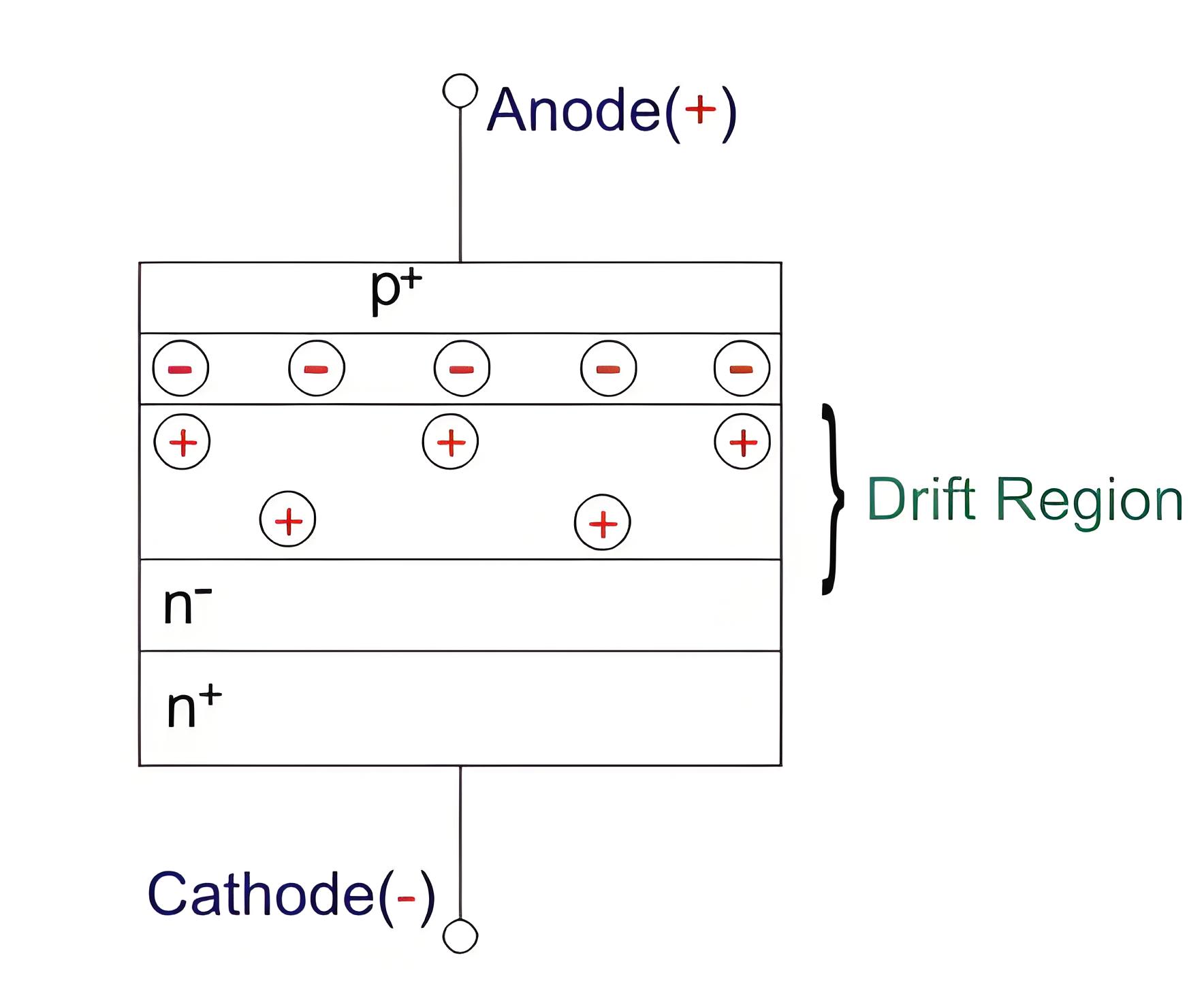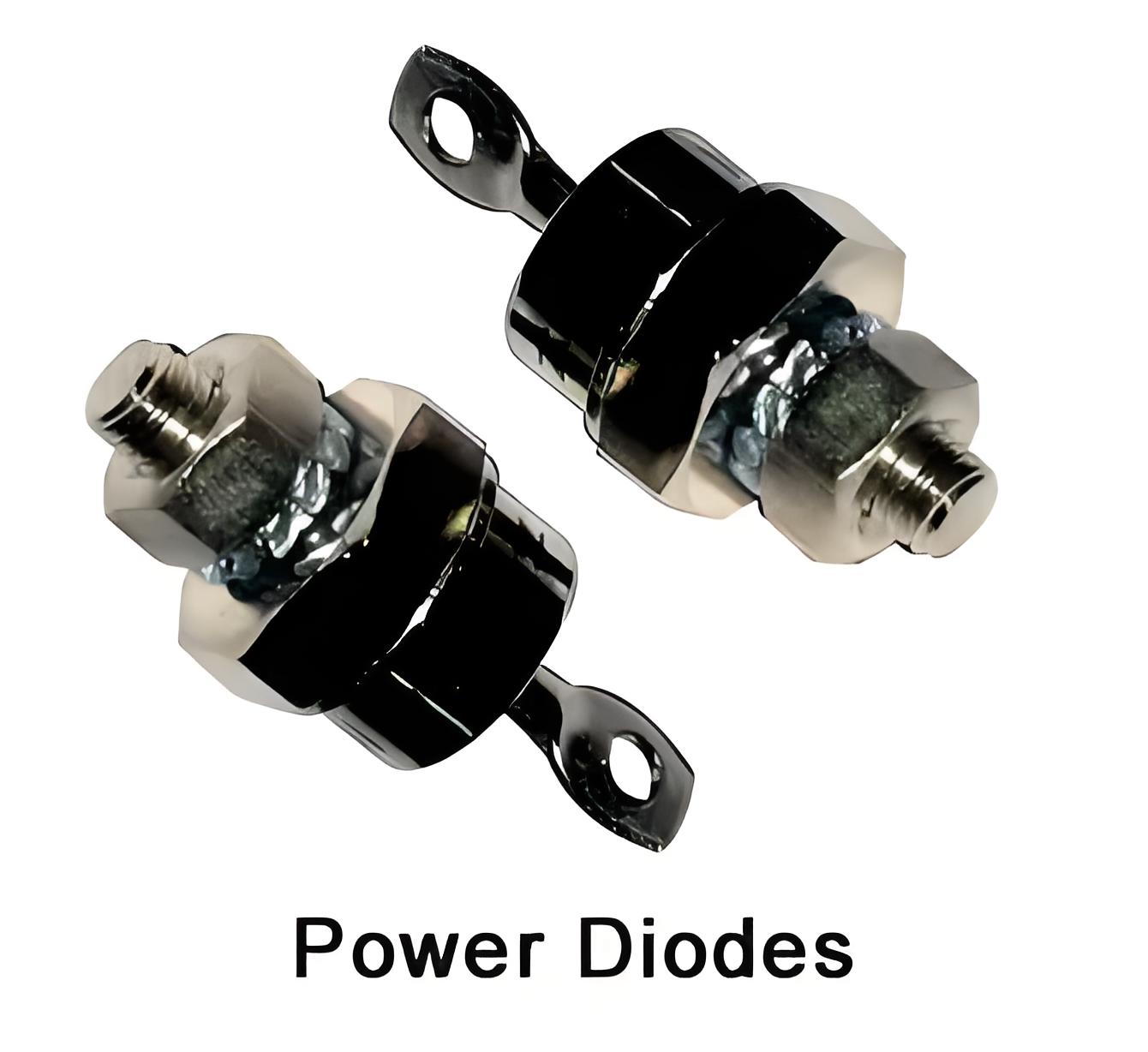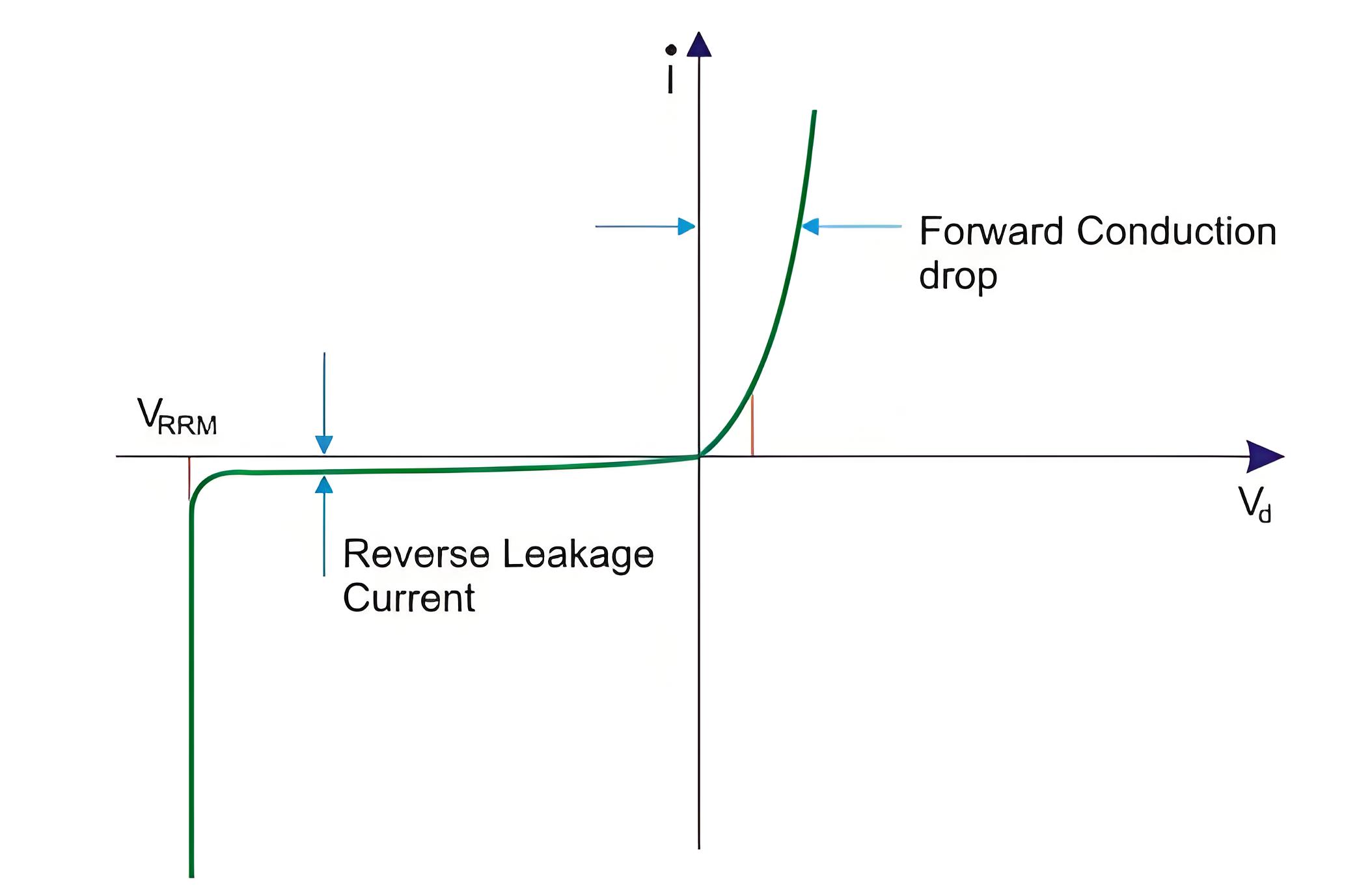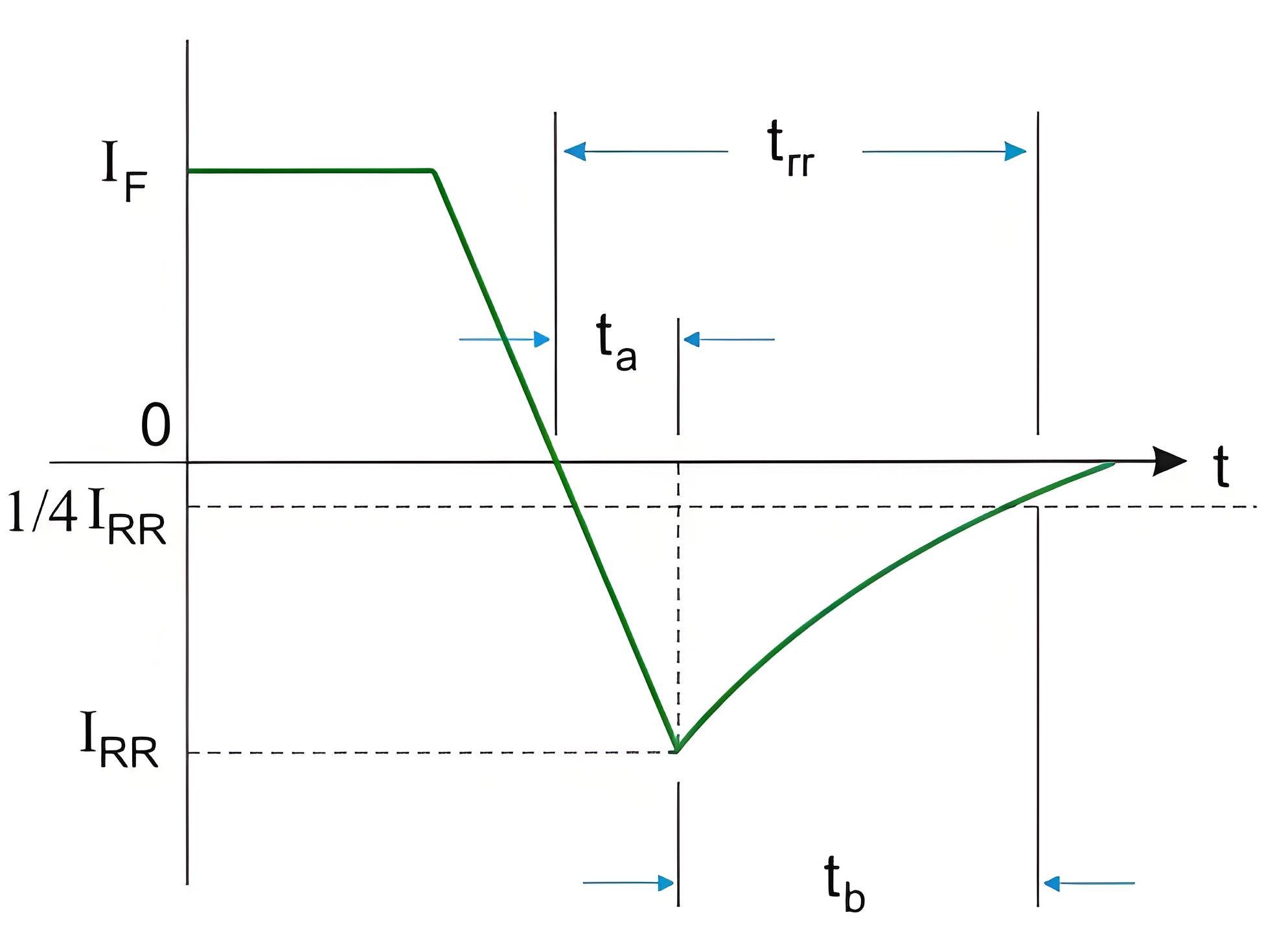What are Power Diodes?
What are Power Diodes?
Power Diode
A power diode is defined as a diode used in power electronics circuits, capable of handling higher currents than regular diodes. It has two terminals and conducts current in one direction, with a construction designed for higher power applications.
To understand power diodes better, let’s revisit how a standard diode works. A diode is defined as the simplest semiconductor device, with two layers, two terminals, and one junction.
Ordinary signal diodes have a junction formed by a p type semiconductor and n type semiconductor. The lead joining the p-type is called the anode, and the lead joining the n-type is called the cathode.
The figure below depicts the structure of an ordinary diode and its symbol.
Power diodes are also similar to regular diodes, although they vary slightly in their construction.

In regular diodes (also known as “signal diode”), the doping level of both P and N sides is the same and hence we get a PN junction, but in power diodes, we have a junction formed between a heavily doped P and a lightly doped N+– the layer which is epitaxially grown on a heavily doped N layer. Hence the structure looks as shown in the figure below.+

The N– layer is the key feature of the power diode which makes it suitable for high power applications. This layer is very lightly doped, almost intrinsic and hence the device is also known as a PIN diode, where i stands for intrinsic.
As we can see in the figure above that the net charge neutrality of the space charge region is still maintained as was the case in the signal diode but the thickness of the space charge region is quite high and deeply penetrated into the N– region.

This is due to its light doping concentration, as we know that the thickness of the space charge region increases with a decrease in doping concentration.
This increased thickness of the depletion region or the space charge region helps the diode to block larger reverse-biased voltage and hence have a greater breakdown voltage.
However, adding this N– layer significantly increases the ohmic resistance of the diode leading to more heat generation during the forwarding conduction state. Hence power diodes come with various mountings for proper heat dissipation.
N- Layer Importance
The N- layer in power diodes is lightly doped, increasing the space charge region thickness and allowing higher reverse-biased voltages.
V-I Characteristics
The figure below shows the v-i characteristics of a power diode which is almost similar to that of a signal diode.
In signal diodes for forward, a biased region the current increases exponentially however in power diodes high forward current leads to high ohmic drop which dominates the exponential growth and the curve increases almost linearly.

The maximum reverse voltage that the diode can withstand is depicted by VRRM, i.e. peak reverse repetitive voltage.
Above this voltage, the reverse current becomes very high abruptly and as the diode is not designed to dissipate such a high amount of heat, it may get destroyed. This voltage may also be called peak inverse voltage (PIV).
Reverse Recovery Time

The figure depicts the reverse recovery characteristic of a power diode. Whenever the diode is switched off the current decays from IF to zero and further continues in reverse direction owing to the charges stored in the space charge region and the semiconductor region.
This reverse current attains a peak IRR and again starts approaching zero value and finally, the diode is off after time trr.
This time is defined as reverse recovery time and is defined as the time between the instant forward current reaches zero and the instant the reverse current decays to 25% of IRR. After this time the diode is said to attain its reverse blocking capability.
Softness Factor
The softness factor of power diodes is the ratio of charge removal times from the semiconductor and depletion regions, indicating voltage transients upon turn-off.
The Electricity Encyclopedia is dedicated to accelerating the dissemination and application of electricity knowledge and adding impetus to the development and innovation of the electricity industry.













